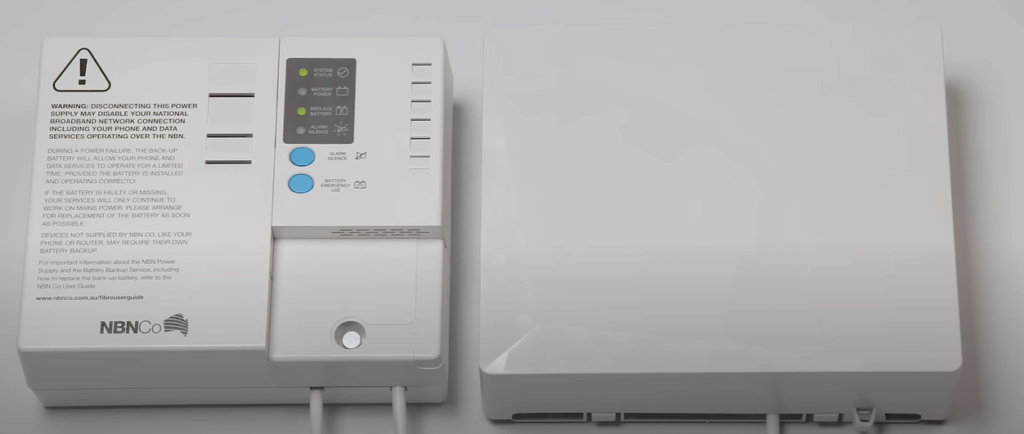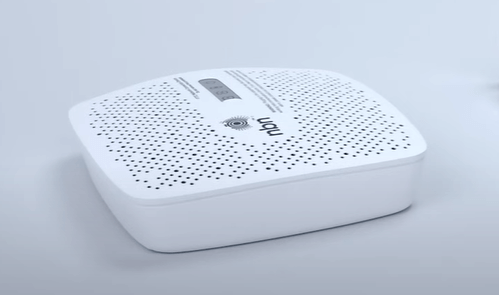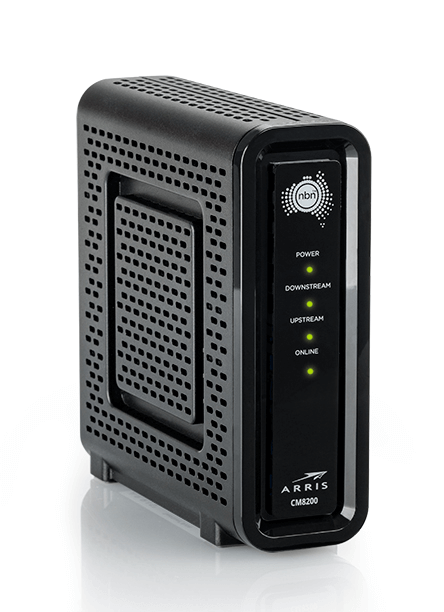KEY POINTS
- An NBN connection box connects your modem to the NBN.
- NBN connection boxes are provided, maintained and installed for free by NBN Co, though some non-standard setups may have a fee.
- A range of different NBN connections require a connection box: FTTP, FTTC, HFC, Fixed Wireless and Sky Muster Satellite.
If your property is connected to the NBN, it will have specialised equipment installed outside and inside to allow you to access to the internet — and depending on your technology type, this may include an NBN connection box. But you might just be wondering: where is my NBN box, what does it do, and why do I need one?
Read on for all the basics on NBN connection boxes.
On this page:
- What is an NBN connection box?
- Where is my NBN connection box?
- What kind of NBN connection box do I need?
- How much does an NBN connection box cost?
- NBN connection box installation
- Can I move with an NBN connection box?
- What if there’s no NBN connection box at my new house?
- What if my NBN connection box isn’t working?
What is an NBN connection box?
Connecting your home to the NBN generally involves the installation and use of both internal and external equipment, which is supplied and maintained by NBN Co. One of the key pieces of equipment is called an ‘NBN connection box’, ‘NBN box’ or ‘NBN Network Termination Device’ (NTD), and it connects your modem/router to the NBN network.
Not every type of NBN technology requires a connection box, and the kind of boxes used will also vary between technologies. However, all NBN boxes require power, and will be either fixed to a wall inside your home, or be a standalone device you can plug in to a power outlet.
Where is my NBN connection box?
No matter your technology type, the NBN connection box is typically installed or placed near an existing wall telephone jack or cable outlet in your home. It should also be in reach of a power outlet, as all NBN boxes require electricity.
Your home’s telephone or cable outlet can then connect your NBN box to an external utility box, which is usually installed outside of your home. If you have an FTTP connection and opt for a power supply unit with battery backup — also known as an NBN battery — you’ll have two boxes installed inside.
If you’ve moved to a new address that requires a connection box, you should find an NBN-branded piece of equipment inside, either installed or placed by a telephone outlet. What this box looks like will depend on your connection type, but most fibre NBN types will use a square white or grey box. HFC connection boxes are usually rectangular and black.
If you’re moving to a newly-built property, or one that’s never had an NBN connection, the NBN connection box will be supplied and/or installed by NBN Co when you sign up for an NBN plan.
Sign up to the right NBN plan for your home
If you’re unhappy with your current internet speed , it may be time to compare and find a better deal. We’ve put together a list of some of the top NBN 50 and NBN 100 plans on our database below.
The following table shows a selection of sponsored unlimited data Standard Plus Evening Speed (NBN 50), and Premium Evening Speed (NBN 100) plans on Canstar Blue’s database with links to referral partners.. 1 Month Contract (1 month min. cost $68.90) Typical evening speed of 50Mbps 1 Month Contract (1 month min. cost $65.00) Typical evening speed of 100Mbps Superloop | Lightspeed 1Gb offer 1 Month Contract (1 month min. cost $85.00) Typical evening speed of 90Mbps The following table shows a selection of published unlimited NBN 50 plans on Canstar Blue’s database, listed in order of standard monthly cost (excluding discounts), from the lowest to highest, and then by alphabetical order of provider. Use our comparison tool above to see plans from a range of other providers. This is a selection of products with links to referral partners. The table below shows a selection of published unlimited NBN 100 plans on Canstar Blue’s database, listed in order of monthly cost, from the lowest to highest, and then by alphabetical order of provider. Use our comparison tool to see plans from a range of other providers. This is a selection of products with links to referral partners.

Unlimited
Data/month
$68.90
Cost/month
Go to Site

Unlimited
Data/month
$65.00
Cost/month
Go to Site

Unlimited
Data/month
$85.00
Cost/month
Go to Site
Unlimited Home Standard (NBN 50) Plans
Unlimited Home Fast (NBN 100) Plans
What kind of NBN connection box do I need?
The type of NBN connection box you’ll need will depend on the NBN technology type that services your home. If you’re unsure of your home’s NBN connection type, NBN Co’s online address checker can help you identify the technology that’s available at your location.
Different NBN technology types will require different connection boxes. Read on for an outline of what you’ll need.
| NBN technology type | NBN connection box required? |
|---|---|
|
Fibre to the Premises |
|
|
Fibre to the Node |
|
|
Fibre to the Curb |
|
|
Fibre to the Building |
|
|
Hybrid Fibre Coaxial |
|
|
Fixed Wireless |
|
|
SkyMuster satellite |
|
NBN connection box for Fibre to the Premises (FTTP)
Fibre to the Premises technology connects fast fibre directly from your home to the nearest NBN node in your neighbourhood. It’s the fastest type of NBN available, and is becoming more common thanks to NBN Co’s fibre upgrade program.
FTTP uses an NBN connection box and an NBN utility box that’s installed on the outside of your property. The NBN connection box connects through the wall to your NBN utility box, and by an Ethernet cable to your modem/router.
FTTP connections also have the option of adding a power supply unit with battery backup, which can keep your home internet running temporarily in the event of a power outage. This is a unit that connects to your NBN box, and then to a power outlet.

NBN connection box for Fibre to the Node (FTTN)
Fibre to the Node is quite common in standalone buildings, and involves using the existing copper wiring in your home to connect to an NBN node in your area.
FTTN connections do not require an NBN connection box — you’ll just need to plug your compatible modem/router into your home’s telephone wall socket.
NBN connection box for Fibre to the Curb (FTTC)
Fibre to the Curb connects your home’s existing copper wiring to an outside distribution point, usually located in a ‘pit’ on your street’s curb. This point is then connected by fibre to your nearest NBN exchange.
FTTC connections require an NBN connection box to work. This box must be plugged into a power outlet and your telephone wall socket, and then connected to your modem/router via an Ethernet cable.

NBN connection box for Fibre to the Building (FTTB)
Fibre to the Building is generally used in apartment buildings, and connects the nearest NBN node to a building’s communications room through fibre. The existing copper wiring in the building is then used to connect each individual apartment.
FTTB NBN does not require an NBN connection box — you’ll just need to plug your modem/router directly into your home’s telephone wall socket.
NBN connection box for Hybrid Fibre Coaxial (HFC)
Hybrid Fibre Coaxial uses existing ‘pay TV’ fibre optic cable to connect your home to the nearest NBN node.
HFC connections require a standalone NBN connection box. This box connects to a HFC wall outlet via coaxial cable, which is installed by NBN Co. The wall outlet then connects to an NBN utility box installed outside of your home. HFC NBN connection boxes must also be plugged into a power outlet and connected to your modem/router.

NBN connection box for Fixed Wireless
Fixed Wireless NBN is mostly used in rural and remote areas, and uses radio signals to deliver internet to your home. You’ll need an external NBN antenna installed, which then receives and sends data to your nearest transmission tower.
Fixed Wireless connections require an NBN connection box to be installed your home. This box must be plugged into a power outlet and your home’s NBN wall outlet, which is connected to your outdoor NBN antenna.
NBN connection box for Sky Muster satellite
NBN Co’s Sky Muster Satellite can deliver internet to regional addresses by beaming network signals to a satellite dish installed on your home.
Satellite NBN uses an NBN connection box, which is connected to both a power outlet and to a wall outlet installed inside your home. The wall outlet then connects through a cable to the satellite dish located on your roof.
Read more: How to move your internet to a new house
How much does an NBN connection box cost?
NBN connection boxes are installed and owned by NBN Co, and shouldn’t come at a cost to customers. Your NBN box is supplied and activated as part of the NBN installation process, which is free for the majority of Australian homes and businesses.
Some non-standard installations may incur a fee, but your NBN provider can alert you of this during the setup process. But for most NBN users, you won’t need to pay anything for your NBN connection box (even if it needs replacing).
NBN connection box installation
If you’re moving to an address that’s new to NBN, or you’re connecting to the network for the first time at your current residence, you’ll most likely need a technician to install and activate equipment on your property – including the NBN connection box.
This is something that your NBN provider will organise when you purchase your home internet plan. You’ll be able to set up an NBN box installation time when you’re purchasing your home NBN plan, and standard installations are free of charge.
Most NBN installations take around a hour, and NBN Co requires someone over 18 to be at home during the appointment.
The best spot to place or install NBN connection box should be:
- Close to a power outlet
- In a cool, dry area with good ventilation
- Away from foot traffic and disturbances, such as children or pets
- Easy to access if you need to troubleshoot your internet.
Can I move with an NBN connection box?
Because the NBN box belongs to your premises, you shouldn’t be taking it with you when you move house. Your new address should have its own NBN connection box waiting, and may use a completely different type of NBN technology that isn’t compatible with your current equipment.
Even if your new home needs to have NBN installed, your NBN technician will bring a new, compatible NBN box with them on installation day. Taking your old NBN box with you when moving means you’ll have an unnecessary piece of equipment you don’t need, and will also cause a hassle for the new residents of your previous address.
If you’re moving, you should leave all NBN equipment at your old address (besides your modem/router, and any Ethernet or power cables you’ve purchased yourself). If you do accidentally take it with you, you can return it to NBN Co free of charge by printing a return label from Australia Post.
What if there’s no NBN connection box at my new house?
If you’ve arrived at a new address but your NBN connection box is missing, you’ll need to let your NBN provider know. They can then arrange with NBN Co to replace any missing equipment, as well as organise a time for a technician to come by and re-install it if needed.
What if my NBN connection box isn’t working?
If you have any issues with NBN Co-supplied equipment, including your NBN connection box, you should contact your NBN provider.



Share this article